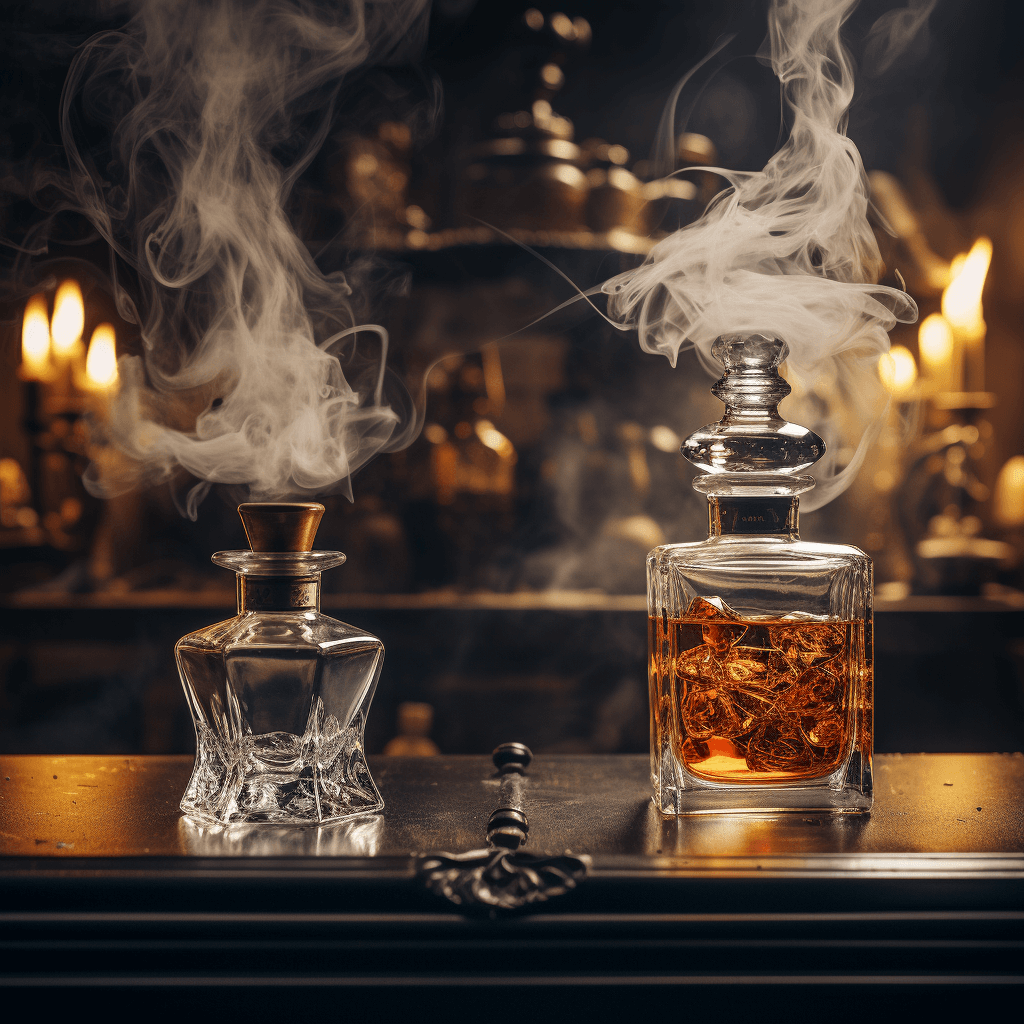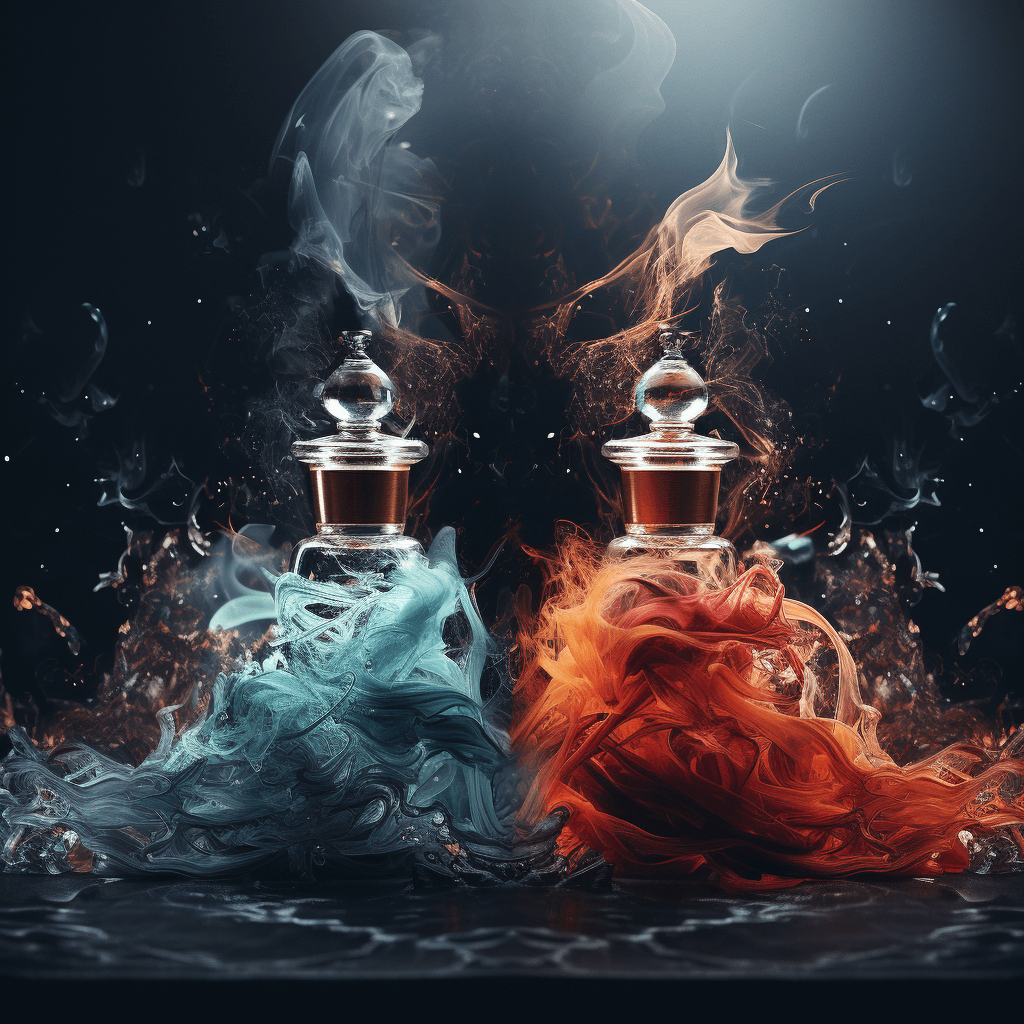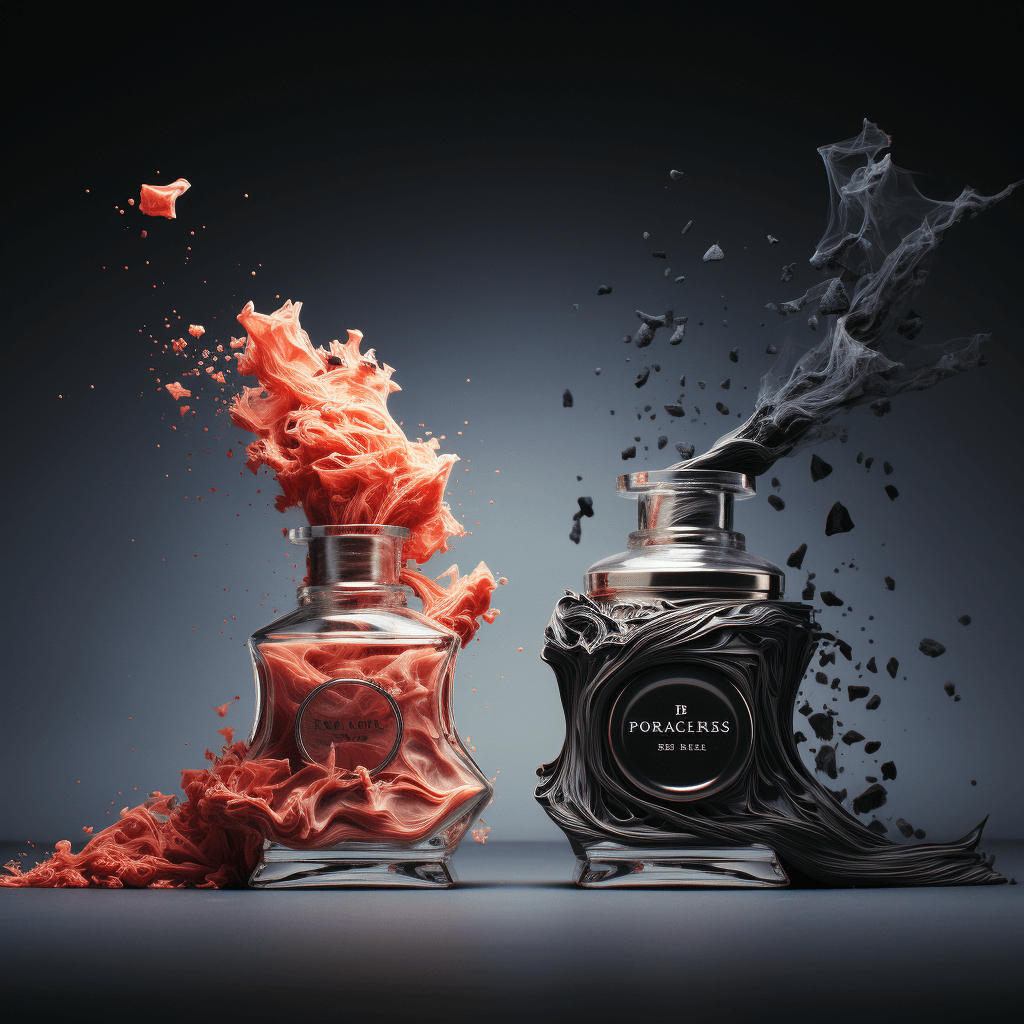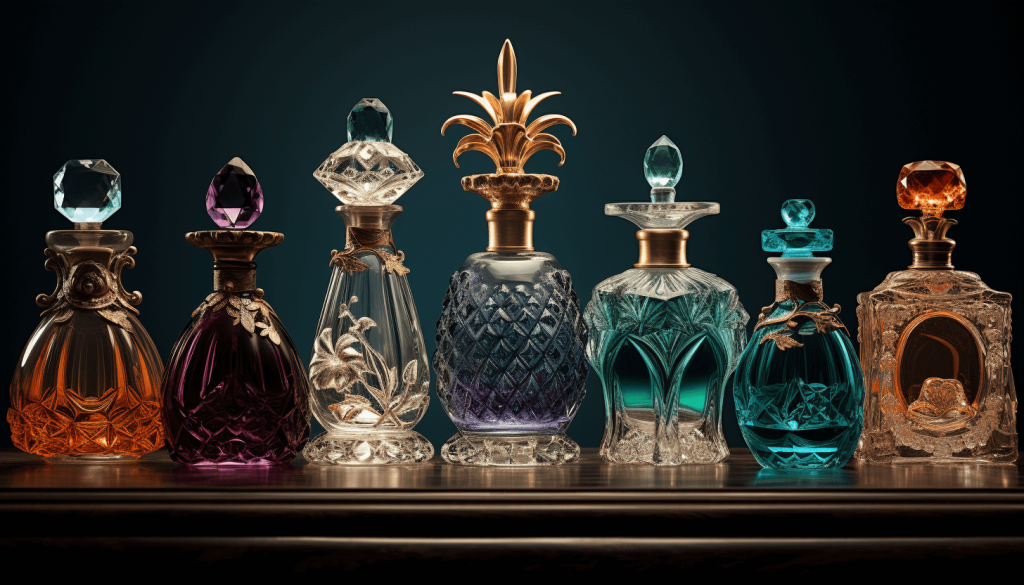Introduction to Fragrances and Their Types
The allure of fragrances is timeless. From the ancient courts of Cleopatra to the modern runways of Milan, scents have always held a special place in culture and personal expression. Yet, with the plethora of terms and categories in the perfume industry, choosing the right fragrance can often feel like navigating a beautiful, but intricate labyrinth.
Every spritz or dab carries with it a story, an identity, and a signature. And while fragrances can be evocative, their nomenclature might be perplexing for many. Why does one label read Eau de Parfum while another proclaims Eau de Toilette? Is there a significant difference, or are they just fancy names?
Before we delve into the nuances between these terminologies, it’s crucial to understand that the world of perfumes is vast and varied. The differences are not just in name but in concentration, longevity, and sometimes, even the occasion they’re best suited for. This guide aims to demystify these terms, helping you make informed choices for your olfactory wardrobe.
“A perfume is like a piece of clothing, a message, a way of presenting oneself … a costume … that differs according to the woman who wears it.” — Paloma Picasso
So, whether you’re a fragrance aficionado or a newbie trying to differentiate between scented waters, this comprehensive exploration will provide clarity. Let’s embark on this aromatic journey!
Eau de Parfum vs. Eau de Toilette: The Core Differences
While both Eau de Parfum (EdP) and Eau de Toilette (EdT) belong to the illustrious family of fragrances, they are distinct in several key areas. Understanding these disparities can be a game-changer when deciding on your next signature scent or a gift for someone special.
1. Concentration
The primary difference between EdP and EdT lies in their perfume oil concentration. Perfume oil is the essence that gives the fragrance its scent.
- Eau de Parfum (EdP): Typically contains a higher concentration of perfume oil, ranging from 15% to 20%. This higher concentration leads to a richer, more robust scent profile.
- Eau de Toilette (EdT): On the other hand, has a concentration usually between 5% and 15%. It’s lighter and can be considered a “daytime” or “casual” fragrance because of its subtlety.
2. Longevity
Given the difference in concentration, it’s natural that the longevity or staying power of the fragrance varies as well.
- Eau de Parfum: Due to its higher concentration, EdP tends to last longer on the skin. Most EdPs can linger for 4-6 hours, with some even staying potent for up to 8 hours or more.
- Eau de Toilette: EdT might need reapplication more frequently, typically lasting around 2-4 hours.
3. Best Uses
The choice between EdP and EdT can also hinge on the occasion, time of day, or even season.
- Eau de Parfum: Its intensity and depth make it ideal for evening wear, special occasions, or colder months when a more substantial scent can cut through the crisp air.
- Eau de Toilette: Its lighter nature is perfect for daytime events, office settings, or warmer months where a subtle fragrance is desired.
4. Price Point
Given the disparities in concentration and longevity, there’s often a noticeable difference in pricing.
Eau de Parfum: Generally, EdPs are priced higher. The rationale behind this is the greater amount of perfume oil and the extended longevity which means you’re using less of the product each time.
Eau de Toilette: EdTs are usually more pocket-friendly, but it’s essential to factor in the potential need for more frequent reapplication.
“Perfume puts the finishing touch to elegance – a detail that subtly underscores the look, an invisible extra that completes a man and a woman’s personality. Without it, there is something missing.” — Gianni Versace
Summary of Differences: Eau de Parfum vs. Eau de Toilette
| Criteria | Eau de Parfum (EdP) | Eau de Toilette (EdT) |
|---|---|---|
| Concentration of Perfume Oil | 15% to 20% | 5% to 15% |
| Longevity | 4-6 hours (up to 8+ for some) | 2-4 hours |
| Best Uses | Evening wear, special occasions, colder months | Daytime, office, warmer months |
| Price Point | Generally higher due to increased concentration and longevity | More affordable but may require frequent reapplication |
Perfume Oil vs. Spray: Which Lasts Longer and Why?
The world of fragrances doesn’t just revolve around the differences in concentration, like with Eau de Parfum and Eau de Toilette. Another intriguing comparison to consider is the medium in which a fragrance is delivered: perfume oils versus sprays. Each has its unique characteristics, which can influence the longevity of the scent, as well as the intensity and experience of its application.
Perfume Oils: A Concentrated Sensation
Perfume oils are essentially the concentrated essence of a fragrance, devoid of any alcohol or fillers that typically accompany sprays. This purity in concentration means:
- Longer-lasting scent: Due to their high concentration, perfume oils tend to linger on the skin much longer than their spray counterparts. The absence of alcohol ensures that the scent doesn’t evaporate rapidly.
- Less irritation: For those with sensitive skin, perfume oils can be a blessing as they often lack the alcohol content that can cause irritation or dryness.
- Personalized intensity: Since oils are applied directly, often with a rollerball or dabbed on, one can control the intensity of the scent by adjusting the quantity used.
Sprays: Convenient and Refreshing
Conventional perfume sprays, which encompass Eau de Parfum, Eau de Toilette, and others, are diluted with alcohol and sometimes water. This dilution affects their characteristics in the following ways:
- Faster application: A spray can quickly cover a larger area, making it convenient, especially when in a rush.
- Diffusion: The nature of sprays means that the fragrance diffuses into the air around, creating an aura of scent. This diffusion might not be as pronounced with perfume oils.
- Shorter longevity: Due to the presence of alcohol, sprays tend to evaporate faster, often requiring reapplication throughout the day.
Summary of Differences: Perfume Oil vs. Spray
| Criteria | Perfume Oil | Spray |
|---|---|---|
| Concentration | Highly concentrated, no alcohol or fillers | Diluted with alcohol and/or water |
| Longevity | Longer-lasting due to concentration | Typically requires reapplication |
| Application Method | Direct, often with a rollerball or dabbed | Quick spray, covers a larger area |
| Sensitivity | Less likely to irritate sensitive skin | Alcohol content can be drying or irritating for some |
| Intensity Control | More control over scent intensity | Diffuses in the environment; less control |
In conclusion, both perfume oils and sprays have their merits. The choice between the two comes down to personal preference, with considerations for convenience, skin sensitivity, and desired longevity playing pivotal roles.
Aftershave vs. Perfume: More Than Just Scent

While both aftershave and perfume belong to the fragrance family, they serve distinct purposes and come with varying compositions. When choosing between them, it’s not merely a matter of picking a scent, but also understanding the unique benefits and effects each product offers.
Aftershave: A Post-shave Comforter
Aftershave, as the name suggests, is primarily applied to the face after shaving. Its main components and characteristics include:
- Antiseptic properties: Often containing ingredients like alcohol or witch hazel, aftershaves help prevent infections from minor cuts or nicks.
- Soothing agents: Aftershaves may also contain moisturizing and calming ingredients, such as aloe vera, to counteract the drying effects of alcohol and reduce post-shave irritation.
- Lighter scent: While they do contain fragrances, the scent of an aftershave is typically milder and doesn’t last as long as a perfume.
- Tightening effect: Some aftershaves can produce a tightening effect on the skin, giving a refreshed feeling.
Perfume: A Symphony of Scents
Perfume, on the other hand, is designed primarily for its aroma. Let’s look into its characteristics:
- High fragrance concentration: With a higher proportion of fragrance oils, perfumes offer a more potent and longer-lasting scent than aftershaves.
- No antiseptic properties: Perfumes are not intended to provide skin benefits post-shaving and thus lack antiseptic ingredients.
- Variety of notes: Perfumes usually consist of a blend of top, middle, and base notes that evolve over time, creating a multi-layered olfactory experience.
- For any occasion: Perfumes are versatile and can be worn anytime, not just after grooming.
Summary of Differences: Aftershave vs. Perfume
| Criteria | Aftershave | Perfume |
|---|---|---|
| Purpose | Primarily for post-shave skin care | Fragrance enhancement |
| Antiseptic Properties | Often contains antiseptics to prevent infections | Lacks antiseptic properties |
| Scent Longevity | Typically has a milder, shorter-lasting scent | Long-lasting due to higher fragrance concentration |
| Additional Benefits | Moisturizes and soothes skin; can have a tightening effect | Offers a multi-layered scent experience with evolving notes |
To summarize, aftershaves and perfumes serve different roles in one’s grooming and fragrance routine. While aftershaves focus on post-shave skin benefits and mild fragrancing, perfumes are all about creating a lasting impression with their scent.
Fragrance vs. Perfume: Beyond the Semantics

The world of scents is vast and fascinating, with a jargon of its own that can sometimes be a bit overwhelming. Two terms that often cause confusion are “fragrance” and “perfume”. While they might seem interchangeable to the untrained nose, understanding their nuances can enhance one’s appreciation of the olfactory arts.
Understanding “Fragrance”
At its core, “fragrance” is a general term that encompasses any smell emanating from a thing, be it natural or synthetic. In the world of personal care and cosmetics:
- Broad Spectrum: The term “fragrance” can refer to any scented component in a product, from lotions to candles to detergents.
- Ingredient Listing: On product labels, “fragrance” is often a catch-all term used to denote a mixture of several scent ingredients, without detailing each one for proprietary reasons.
- Natural or Synthetic: A “fragrance” can be derived from natural sources like essential oils or created synthetically in labs.
Decoding “Perfume”
While “perfume” can sometimes be used generally to refer to any pleasant scent, its definition in the world of personal scents is more specific:
- High Concentration: Perfumes usually have the highest concentration of aromatic compounds, making them last longer than other types of personal scents like eau de toilette or cologne.
- Complex Compositions: A perfume often boasts a multifaceted scent profile, with top, middle, and base notes that unfold over time.
- Premium Positioning: Due to their high concentration of quality ingredients, perfumes are typically priced higher than their lighter counterparts.
Summary of Differences: Fragrance vs. Perfume
| Criteria | Fragrance | Perfume |
|---|---|---|
| Scope | General term for any scent, used in a variety of products | Specifically refers to a type of personal scent with high aromatic concentration |
| On Product Labels | Often a catch-all term for various scent ingredients | Indicates a specific type of product with a high concentration of scent |
| Origin | Can be natural or synthetic | Blend of natural and/or synthetic aromatic compounds |
| Complexity | Varies; can be single-note or multi-note | Typically multi-note with evolving scent layers |
Although “fragrance” and “perfume” are sometimes used interchangeably, recognizing their distinct meanings helps in making informed choices when shopping and enhances the appreciation of the art behind scent creation.
Toilette vs. Cologne: A Comparative Analysis
The intricate world of scents presents a myriad of terminologies that often lead to confusion, especially when they appear similar in nature but differ in essence. Two such terms that often puzzle individuals are “toilette” and “cologne”. Let’s dive deep into the characteristics that differentiate these two.
Origin and Terminology of “Toilette”
The term “toilette” traces its roots to the French word “toilette”, which originally referred to a dressing table. In the context of fragrances, “toilette” is often seen in the term “eau de toilette” (EDT). An eau de toilette is a light-scented formula:
- Concentration: Typically, eau de toilette has a fragrance concentration of about 5-15%.
- Longevity: Because of its lighter concentration, EDTs generally last for about 3-4 hours.
- Usage: Owing to its subtle nature, it’s perfect for daytime wear or occasions when a light and refreshing scent is desired.
The Legacy and Definition of “Cologne”
The term “cologne” originates from the city of Cologne in Germany, where a particular fragrance known as “Eau de Cologne” was first created. In modern parlance:
- Concentration: Colognes typically have a fragrance concentration of about 2-5%.
- Longevity: Given their minimal concentration, colognes may last up to 2 hours on the skin.
- Usage: Cologne is great for a quick refreshing spritz, especially in warmer climates or after a workout.
Summary of Differences: Toilette vs. Cologne
| Criteria | Toilette | Cologne |
|---|---|---|
| Origins | Derived from French dressing practices | Named after the city of Cologne, Germany |
| Fragrance Concentration | 5-15% | 2-5% |
| Longevity | Approximately 3-4 hours | Up to 2 hours |
| Typical Usage | Daytime, casual events | Warm climates, post-exercise refreshment |
While both toilette and cologne offer delightful aromatic experiences, understanding their distinctions ensures that one chooses the right scent for the right moment, creating lasting olfactory memories.
Parfum vs. Cologne: The Battle of Intensity

Both “parfum” and “cologne” are terms that resonate deeply with fragrance aficionados. At the core of their difference is the intensity and longevity each brings to the wearer. But the distinctions go beyond mere percentages. Let’s delve into the intricacies of these two prominent members of the fragrance family and understand what sets them apart.
The Prestige of Parfum
Also referred to as “pure perfume” or “perfume extract”, parfum sits atop the hierarchy in the world of fragrances in terms of concentration:
- Concentration: Parfums boast the highest concentration of fragrance, typically ranging from 20% to 40%.
- Longevity: Due to its robust concentration, a parfum can linger on the skin anywhere from 6 to 24 hours, making it the longest lasting among all fragrance types.
- Usage: Given its intensity, a dab or two is sufficient. It’s ideal for special occasions or evenings.
The Lightness of Cologne
Cologne, as previously explained, is the lightest form of fragrance in terms of concentration:
- Concentration: Colognes hold a fragrance concentration of about 2-5%.
- Longevity: Their breezy nature means they evaporate relatively quickly, lasting up to 2 hours.
- Usage: Colognes are perfect for a quick pick-me-up, making them a staple for daytime use or moments when a gentle scent is preferred.
Summary of Differences: Parfum vs. Cologne
| Criteria | Parfum | Cologne |
|---|---|---|
| Concentration | 20-40% | 2-5% |
| Longevity | 6-24 hours | Up to 2 hours |
| Typical Usage | Special occasions, evenings | Daytime, quick refresh |
Understanding the disparities between parfum and cologne can be pivotal in one’s fragrance journey. Recognizing their unique qualities helps in tailoring the perfect scent experience for every occasion.
Conclusion: Choosing the Right Fragrance for You
Finding that signature fragrance, the one that seamlessly blends with your essence, can be a thrilling journey. Throughout this guide, we’ve sailed through the diverse spectrum of fragrances, from the intense allure of parfums to the refreshing whisper of colognes. But the world of fragrances isn’t just about distinguishing one type from another; it’s also about finding the one that feels right, that complements your natural aroma, and that speaks to your soul.
Remembering the Main Differences
Each type of fragrance has its unique characteristics:
- Eau de Parfum – Rich, long-lasting, and suited for evening wear or special occasions.
- Eau de Toilette – Lighter, great for daytime use, and offers a moderate longevity.
- Perfume Oil – Potent and long-lasting, often used sparingly.
- Aftershave – Contains less fragrance concentration, primarily designed to soothe the skin after shaving.
- Fragrance – A generic term encompassing all scented products.
- Cologne – Light, refreshing, and perfect for a quick spritz during the day.
Aligning Fragrance with Individuality
Choosing the perfect fragrance goes beyond the simple metrics of concentration and longevity. It’s about aligning the scent with your personality, lifestyle, and even your mood on a particular day. Whether you lean towards floral notes, woody undertones, or zesty citrus bursts, there’s something out there that’s uniquely you.
Tips for Selecting Your Fragrance:
- Test before purchasing. Scents can smell differently once they meld with your skin’s natural oils.
- Consider the occasion. Lighter scents for casual outings and richer fragrances for special events can be a good rule of thumb.
- Listen to your intuition. Sometimes, the right fragrance just feels right.
In conclusion, the art of selecting a fragrance is deeply personal. As you embark on this olfactory adventure, let the scents transport you, tell a story, and ultimately, be an extension of who you are. Celebrate your individuality, and remember, there’s no right or wrong choice in the world of fragrances – just the one that makes you feel undeniably you.
Frequently Asked Questions
What’s the primary difference between Eau de Parfum and Eau de Toilette?
The primary difference between Eau de Parfum (EdP) and Eau de Toilette (EdT) lies in their concentration of perfume oils. EdP typically has a higher concentration of fragrance oils, usually between 15% to 20%, making it richer and longer-lasting. On the other hand, EdT has a concentration ranging from 5% to 15%, which results in a lighter fragrance that may not last as long as its EdP counterpart.
How long does a Perfume Oil typically last compared to a Spray?
Perfume oils generally last longer than sprays due to their concentrated nature. They don’t contain alcohol, which is often present in sprays. Alcohol causes the fragrance to evaporate more quickly. While a spray might last anywhere from 3 to 5 hours, depending on its concentration and the wearer’s skin chemistry, perfume oils can last anywhere from 6 to 15 hours, offering a more enduring scent experience.
Can aftershaves be used as a daily fragrance?
Yes, aftershaves can be used as a daily fragrance. Aftershaves often contain a scent, but their primary purpose is to soothe and disinfect the skin post-shaving. They usually have a lighter fragrance concentration compared to perfumes or colognes. This means that while aftershaves provide a fresh and clean scent immediately after application, the fragrance might not be as long-lasting as traditional perfumes or colognes. However, for those who prefer a subtle scent for everyday wear, an aftershave can be an excellent choice.
Is there a significant difference between a ‘fragrance’ and a ‘perfume’?
While often used interchangeably, there is a nuanced difference between ‘fragrance’ and ‘perfume.’ ‘Fragrance’ is a general term used to describe any scent, regardless of its concentration. It encompasses all types of scented products, from eau de toilettes to colognes and even scented lotions or candles. On the other hand, ‘perfume’ typically refers to the highest concentration of scented products, with the term often used to describe Eau de Parfum or Parfum. Thus, all perfumes are fragrances, but not all fragrances are necessarily perfumes.
Is parfum better than toilette?
“Better” is subjective when it comes to fragrances, as individual preferences vary. However, from a concentration standpoint, parfum (or Eau de Parfum) has a higher concentration of fragrance oils than Eau de Toilette. This often results in parfum being richer and lasting longer on the skin. If you’re looking for longevity and a more pronounced scent, parfum might be a better choice. Conversely, if you prefer a lighter, more fleeting fragrance, Eau de Toilette could be your go-to.
Which perfume lasts longer, Eau de Toilette or Eau de Parfum?
Eau de Parfum typically lasts longer than Eau de Toilette. This is because Eau de Parfum has a higher concentration of fragrance oils (usually between 15% to 20%) compared to Eau de Toilette (which ranges between 5% to 15%). As a result, the scent of Eau de Parfum tends to linger on the skin for a more extended period, often several hours longer than Eau de Toilette.
Is Eau de Parfum as good as Eau de Toilette?
Neither Eau de Parfum nor Eau de Toilette is inherently “better” than the other; it largely depends on personal preference. Eau de Parfum has a higher concentration of fragrance oils, making it richer and more long-lasting. In contrast, Eau de Toilette offers a lighter scent, which some may find more refreshing and suitable for day-to-day wear. It’s essential to determine what you’re looking for in a fragrance – be it intensity, longevity, or subtlety – and choose accordingly.
How long does Eau de Toilette last for?
Eau de Toilette typically lasts anywhere from 3 to 5 hours on the skin. Its longevity can vary based on factors like the fragrance’s specific composition, skin type, pH levels, and external factors such as temperature and humidity. Applying Eau de Toilette on moisturized skin and pulse points like the wrists, neck, and behind the ears can enhance its lasting power. However, its duration is generally shorter than that of higher concentration formulations like Eau de Parfum.
Should men use cologne or perfume?
Both cologne and perfume can be worn by men, depending on their preference. The primary distinction between the two is the concentration of fragrance oils. Traditionally, cologne has been marketed towards men and has a lighter scent, while perfume or Eau de Parfum has a higher concentration and is often richer. However, scent is a personal choice, and gender boundaries in fragrances have blurred over the years. Many modern fragrances are unisex. Men should choose based on their scent preference and the desired longevity of the fragrance, rather than traditional gender norms.
What’s the primary difference between a fragrance and a perfume?
The terms “fragrance” and “perfume” are often used interchangeably in everyday language. However, in the world of scents, “fragrance” is a broader term referring to any pleasant scent, while “perfume” is a specific type of fragrance product with the highest concentration of essence, typically ranging between 20% to 30%. Therefore, all perfumes are fragrances, but not all fragrances are necessarily perfumes.
Is there a significant price difference between Eau de Parfum and Eau de Toilette?
Generally, Eau de Parfum (EdP) tends to be priced higher than Eau de Toilette (EdT). This is primarily due to the higher concentration of fragrance oils in EdP, making it richer and longer-lasting. The ingredients, brand reputation, packaging, and marketing can also influence the price. However, it’s always a good idea to check and compare prices, as there can be exceptions based on brand strategies and other factors.
Why are some fragrances so much more expensive than others?
The cost of a fragrance can be influenced by various factors. Premium or rare ingredients, intricate extraction processes, brand reputation, limited edition releases, packaging intricacy, and marketing campaigns can all contribute to a fragrance’s price. Moreover, niche or luxury brands might price their fragrances higher due to exclusivity or the artisanal approach they adopt in scent creation. While the actual scent plays a role in the cost, the overall brand experience and perceived value can also significantly impact the price.
This article is a chapter from our comprehensive Fashion Guide, where we delve into various aspects of the fashion world, from perfumes to clothing, haircuts, and beyond. If you found this piece insightful, you might also enjoy exploring our detailed guide on 50 Types of Haircuts. Dive in and continue your journey to becoming a fashion aficionado!

